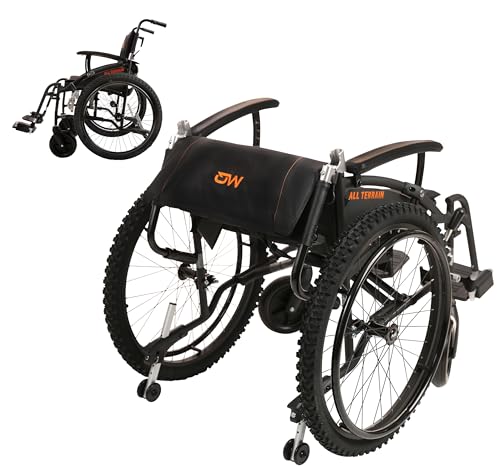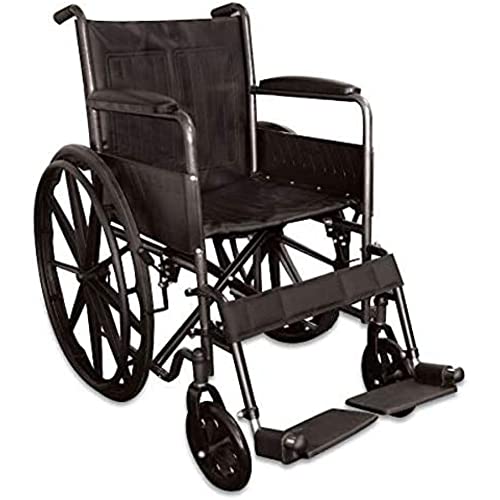5 Killer Quora Answers On Transit Wheelchair Vs Self Propelled
페이지 정보

본문
 Transit Wheelchair Vs Self Propelled
Transit Wheelchair Vs Self PropelledTransit wheelchairs (also called attendant chairs) are designed to be pushed, such as by caregivers. They have a handle at the back and can be folded down to fit in a car boot or for easy storage.
These are also perfect for public transport like trains and buses.
Size
Self-propelled wheelchairs allow clients to move around on their own without having to depend on an individual pushing them. They can visit the shops, meet with friends or take a walk whenever they want, without having to wait around for someone else to be available. Self-propelled chairs come with a variety of push-rims which allow the user to move more easily and efficiently. They also have larger rear wheels that are designed to help them move over obstacles more easily. The type of wheel whether pneumatic (air) and solid, will affect the amount of weight carried over rough surfaces.
Transit wheelchairs, also called attendant-propelled chairs are equipped with smaller frames and wheels that are lighter which makes them ideal for shorter distance travelling when they are being pushed by an attendant. These types of wheelchairs are used by health and medical facilities to transport clients to different locations, like for trips to town or visit family members. These types of wheelchairs are also found in airports where employees help passengers get from the gate of arrival to their aeroplane.
When selecting a transit chair it is essential that the seat width and depth are appropriate for the particular user. It will let the user sit in the chair in the most comfortable posture possible, improving mobility and well-being. It will also help to lower the risk of pressure sores and other medical issues.
 Take note of any additional features the wheelchair might have for example, armrests that are removable or a reclined backrest. These can make it easier to use and make it easy to fold up for storage or transportation. Some wheelchairs come with a wheels that are quick release and can be removed easily to make the wheelchair lighter and easier to transport or store. This can be a security feature, as it stops the wheel from getting stuck when it is being transported.
Take note of any additional features the wheelchair might have for example, armrests that are removable or a reclined backrest. These can make it easier to use and make it easy to fold up for storage or transportation. Some wheelchairs come with a wheels that are quick release and can be removed easily to make the wheelchair lighter and easier to transport or store. This can be a security feature, as it stops the wheel from getting stuck when it is being transported.Weight
The weight of a wheelchair can make a big difference in its maneuverability and ability to move over terrains that vary. This is especially important in the case of transit chairs which are designed to be pushed over short distances by an attendant. They have smaller frames and wheels that are lighter than other types of wheelchair making them easy to push.
These chairs are also ideal for local trips for shopping or visiting friends. It is crucial to take into account the needs and expectations of the user when selecting a transit wheelchair. The width and depth of the seat should be adapted to the size of the passenger. Padded wheelchair cushions can be used to increase comfort and prevent pressure ulcers.
A self-propelled chair however, has large rear wheels which allows users to move while remaining seated. These chairs are designed to be pushed by a family member or attendant however, they can also be used to propel themselves.
Wheelchairs are available in different sizes and styles to satisfy the needs of a variety of people. It is important to consider what you want to achieve with your chair prior to deciding whether to go with a self-propelled or a transit chair. If you are looking to use a wheelchair outdoors it is usually recommended to pick one with larger rear wheels that will allow you to easily navigate the slopes and steps.
Wheelchairs with big rear tires are also more stable, and can help to reduce the chance of tipping on uneven surfaces. If you're unsure of which wheelchair is best self-propelled wheelchair for you, or you're thinking about upgrading consider consulting an expert. They can advise you on which wheelchairs are the most suitable for your needs and help to select the right model.
Contact us today to speak to an expert in wheelchairs if you would like to know more. Our team of friendly and knowledgeable experts will help you find a wheelchair that will meet your specific requirements.
Stability
Many people think of a transit chair or transport chair when they picture a wheelchair. It has four wheels at the rear and two handles for the attendant to help push it through. They are great for trips to the shops or when you go on vacation, because they can be driven by an attendant. They are light and compact and easy self-propelled wheelchair to handle and to store.
Stability is a key factor to take into consideration when selecting the right wheelchair. The location of the rear wheel is a key factor in determining how to use a self propelled wheelchair stable the chair is. A wheelchair with the wheel well forward of the client is often very unstable and could easily tip. This is especially a problem when outdoors where there may be obstacles to travel through. Wheelchairs with the rear wheel further back are usually more stable but this can hinder the ability of the user to perform a 'wheelie', or to climb small steps.
Another thing to consider is the seat-to-floor-height of the wheelchair. If a person is very tall or has arms that are short, they may need to select a different wheelchair model. The reason is that they will not be able to reach the hand rims of the wheelchair with their hands comfortably when sitting in the wheelchair.
Self propelled wheelchairs, on the contrary, are more suited to maneuver through rough terrain than assisted counterparts. This is due to their larger rear wheels and push rims that can be reached by the user. Self-propelled wheelchairs are typically driven over obstacles such as grass, gravel or even small steps.
If someone is going to use a self propelled wheelchair it is important to plan their routes in advance to ensure that they do not end up on the side of the road with an unexpected obstacle. You should also think about whether the chair is intended to be used indoors or outdoors. The terrain can have a huge impact on the ability of the user to travel independently.
Mobility
Many elderly and disabled individuals who are unable walk or stand for long periods of time find wheelchairs to be a valuable piece of equipment. There are two primary kinds of manual wheelchairs utilized for this purpose: transit and self powered.
A transit wheelchair is a type of wheelchair that is designed to be pushed by an attendant, such as an attendant or nurse. They are a good option for wheelchair users who require the assistance of an attendant when traveling long distances. They have smaller rear wheels that have a smaller turning radius as well as lighter frames which make them easier to push. They are generally easy to fold, and can be stored or transported in the car boot.
lightweight folding self propelled wheelchair-propelled wheelchairs on the other hand, can be moved by the user by using their upper body strength. The large rear wheels of these chairs are moved using hand rims to help the passenger move their chair forwards and backwards. This lets the wheelchair user maintain their independence and control over their daily activities within a particular setting.
Both wheelchair models have their advantages, but it's crucial to think about the purpose of the wheelchair prior to buying. If the wheelchair is meant to travel long distances, it will need to be durable enough to stand up to the wear and tear that comes with prolonged usage. You might need to select the right wheelchair for uneven or difficult surfaces, such as grass or gravel.
It is also a good idea to consider the accessibility of the wheelchair and whether it will be able to be easily removed and deployed. This will be a significant factor for those wheelchair users who wish to travel by coach or train since these vehicles often have limited space. It is also worth looking into the wheelchair's ability to go through metal detectors at airports, ports or cruise ships if it is an everyday part of the wheelchair user's international travel.
- 이전글You'll Never Be Able To Figure Out This Lexus Key Fob's Benefits 24.11.10
- 다음글10 Facts About Rolls Royce Key Fob Price That Will Instantly Put You In An Upbeat Mood 24.11.10
댓글목록
등록된 댓글이 없습니다.
